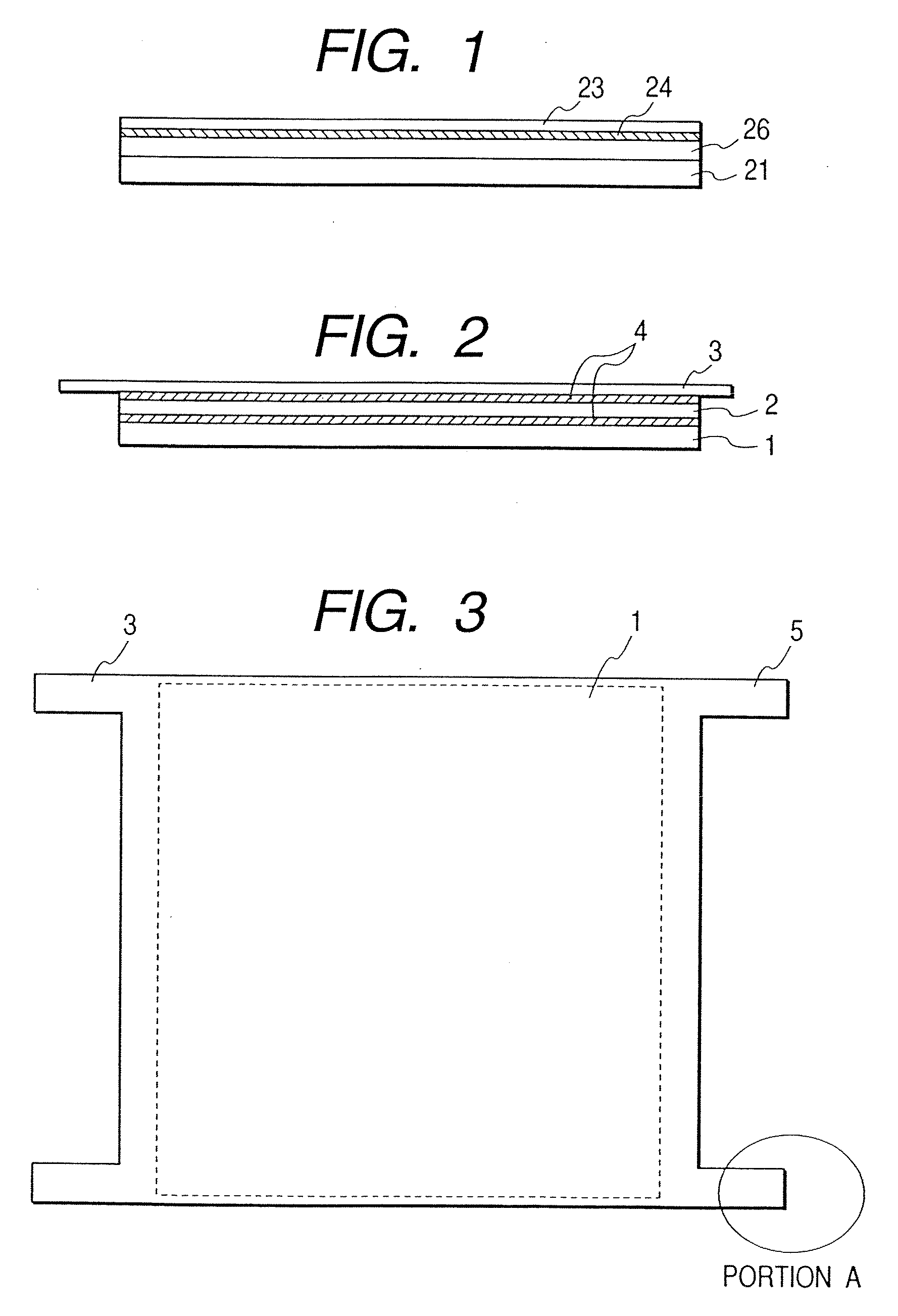Photoelectric conversion device for reducing radiation noise on large screen sensors
a technology of radiation noise reduction and conversion device, which is applied in the field of photoelectric conversion device, can solve the problems of degrading the reliability of the photoelectric conversion device, unable to perfect eliminate fine dust during the fabrication of the photoelectric conversion semiconductor layer, and unable to achieve the effect of preventing the effect of radiation nois
- Summary
- Abstract
- Description
- Claims
- Application Information
AI Technical Summary
Benefits of technology
Problems solved by technology
Method used
Image
Examples
Embodiment Construction
[0052] The present invention will be described by reference to the accompanying drawings as occasion may demand.
[0053]FIG. 2 is a schematic, cross-sectional view of an example of a photoelectric conversion device capable of reading an X-ray image, in which an X-ray image on a fluorescent member radiating light with reception of X-rays traveling through an object is electrically read by a photoelectric conversion element.
[0054] The photoelectric conversion device of the present invention generally concerns the contact sensors of the 1:1 reading type with a photoelectric conversion layer comprising a material capable of photoelectric conversion such as a-Si, particularly all two-dimensional sensors, but the device will be described with typical examples of application as image information reading means of the X-ray roentgen apparatus (X-ray imaging apparatus).
[0055]FIG. 2 shows an example of a photoelectric conversion device in which a fluorescent screen 2 for converting X-rays int...
PUM
 Login to View More
Login to View More Abstract
Description
Claims
Application Information
 Login to View More
Login to View More - R&D
- Intellectual Property
- Life Sciences
- Materials
- Tech Scout
- Unparalleled Data Quality
- Higher Quality Content
- 60% Fewer Hallucinations
Browse by: Latest US Patents, China's latest patents, Technical Efficacy Thesaurus, Application Domain, Technology Topic, Popular Technical Reports.
© 2025 PatSnap. All rights reserved.Legal|Privacy policy|Modern Slavery Act Transparency Statement|Sitemap|About US| Contact US: help@patsnap.com



